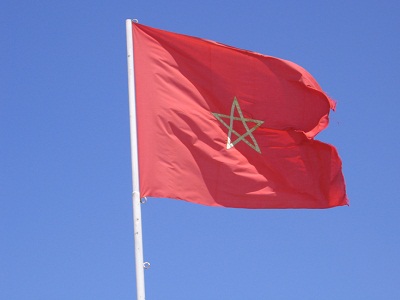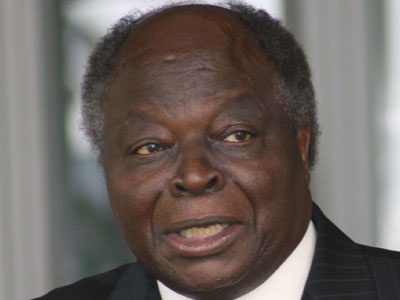
Child participates in USAID's Interactive Radio Instruction education program, the only possible ICT project currently in Somalia.
Last week, I interviewed Mohamed Ahmed Jama, CEO of Dalkom Somalia and board member of Frontier Optical Networks Ltd (FON) in Kenya. Mr. Jama described four potential Broadband cables that could be a part of a terrestrial backbone throughout East Africa, including in Somalia. A fifth was announced yesterday in Somaliland.
Though all three of these proposed links are just that—proposals—they are indicative of the rapid growth of Broadband connectivity in the region. Most East African governments are actively engaged in rolling out backbone terrestrial networks, while four years ago the World Bank called East African connectivity the world’s only “missing link.” South Sudan is working with the CTO to develop an ICT strategic plan, Burundi recently received funding from the World Bank, and Uganda has also invested as well. And private companies are facilitating the expansion of Broadband cables as well; they are working with the national governments to lay the cables and to fund the projects. The East African Backhaul System, recently announced as a combined $400 million partnership between Burundi, Rwanda, Uganda, Tanzania, South Sudan, Kenya, and the Democratic Republic of the Congo governments and a variety of private telecoms. The unique partnerships between the public and private sector make the ICT space in East Africa distinct from other regions.
Potential backbone networks in Somalia, Ethiopia, and South Sudan are listed here and can be seen on the following map (forgive the rough estimations, I did not draw this exact):

1. Somalia’s Connection to EASSy Cables (blue line)
According to Mr. Jama, Dalkom Somalia has built two cable landing sites in Somalia from the EASSy submarine cable, one in Somaliland and the other in Mogadisho, Somalia. Unfortunately, the government of Somaliland revoked Dalkom’s license last year before the cable was completed (scheduled to be finished in October, 2010). The Somaliland government claimed that they had already signed an agreement with a local company, SomCable. However, no additional work has been carried out since last year, leaving construction at a stand still and the region unconnected. In Mogadisho, on the other hand, the landing cable lays ready to be used, but remains unconnected due to security issues at the site. To make matters more frustrating, Dalkom has funding, contracts awarded and the regulatory approval to extend the cables from the landing site inward, creating a national terrestrial backbone. Security issues in the area are the only contingency.
2. Mombasa—Nairobi—Moyale, Ethiopia Cable (green line)
The EASSy submarine cable has been extended inland previously from Mombasa to Nairobi. For the past year, discussions have been underway been the Kenyan and Ethiopian government on possibly constructing a terrestrial cable from Nairobi to Moyale, on the Ethiopian border. However, with FON’s assistance, the cable has been built, but is yet to be lighted. The only remaining holdup is to sign an agreement of understanding with the Ethiopia government, which has historically been reluctant to work with private sector ICT companies.
3. Somalia—Kenya Connection (black line)
According to Mr. Jama, there is 560 km remaining between fiber optic terrestrial backbone cables in Somalia and the state of Mandera in Northeastern Kenya. Mr. Jama proposes that the Kenyan government bring the fiber to the border, and then Dalkom Somalia would complete the Somali side. This connection would connect Somalia to the African backbone network. However, there has been intermittent violence on the Kenya-Somalia border in Mandera, with the most recent issue being a land mine blast that killed eleven Kenyan officers. The volatility of the border could potentially lead to another security standstill before lighting the fiber, like in Mogadisho. Dalkom and the governments, then, need to concern themselves not only with the technical issues and construction of the remaining fiber, but also on the political instability of the region.
4. Juba—Lokichogio Link (red line)
Southern Sudan and Kenya plan to construct a fiber optic cable link between the two nations as part of a larger project entitled “four-in-one.” The project includes the construction of a railway line from Lodwar-Lokichogio to Juba, road rehabilitation, an oil pipeline, and fiber optic cables. Currently, the governments need to conduct a feasibility test given the mountainous nature of the route, especially the Great Rift Valley. In all likelihood, the project will not be finished before 2015.
5. Djibouti—Somaliland SomCable (orange line)
SomCable, supported by the interim government in the territory of Somaliland, reportedly signed an agreement to buy the necessary buildings and licensing in Djibouti to route the EASSy cable into Berbera and throughout Somaliland. The President of SomCable, Mr. Mohammed Gueti, announced his recent acquisitions just yesterday. Mr. Gueti has strong ties with the president of Djibouti’s family, arguably giving his company an advantage over Dalkom Somalia at winning the contract. However, as Mr. Jama points out, construction has yet to begin on this cable line, possibly suggesting that the announcement is merely a political move by the government of Somaliland as Mr. Gueti does has any rights to extend the EASSY Cable. Neither purchases any capacity from the members of the Consortium.

























































